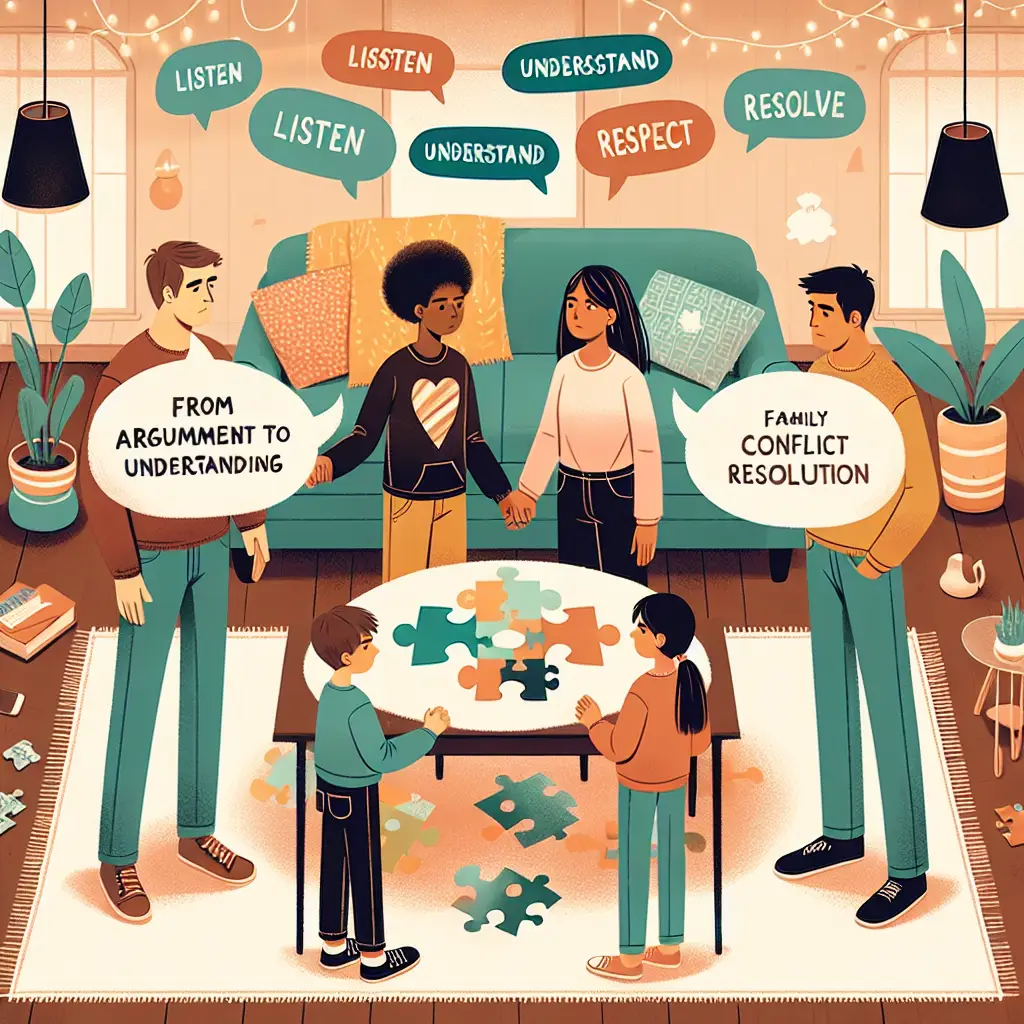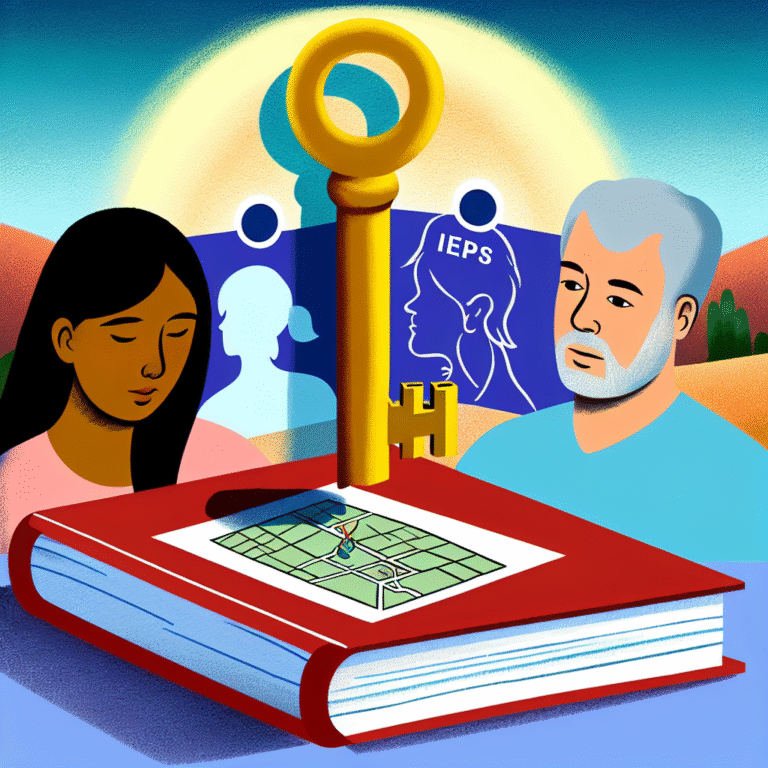
From Argument to Understanding: Essential Family-Friendly Conflict Resolution Tips
Introduction
In the heart of every family lies the potential for conflict. Whether it’s a disagreement over chores, bedtime rules, or holiday plans, arguments are a natural part of shared living. However, the way these disputes are handled can set the tone for family dynamics, shaping relationships for years to come. In today’s increasingly busy world, mastering the art of conflict resolution is not just beneficial—it’s essential. That’s why we’re diving deep into From Argument to Understanding: Family-Friendly Conflict Resolution Tips. This guide provides practical insights and tools that will help families turn disagreements into opportunities for growth and deeper understanding.
Understanding the Nature of Family Conflict
1. The Roots of Family Conflict
Family conflicts can arise from multiple sources, including differing values, communication styles, and life transitions. Recognizing these roots is the first step toward resolving disputes effectively.
Case Study: The Smith Family
The Smith family regularly faced conflicts over their differing weekend routines. While the parents enjoyed relaxing, their children wanted to engage in activities. By understanding that their kids sought connection during family time, the Smiths created a weekend plan that balanced relaxation with fun, leveraging this mixture to solution-building.
Relevance:
This case illustrates that understanding the underlying motivations can lead to cooperative solutions, emphasizing From Argument to Understanding: Family-Friendly Conflict Resolution Tips.
2. Emotional Intelligence: The Key to Conflict Resolution
Emotional intelligence involves recognizing and managing emotions — both one’s own and those of others. This skill is paramount in family settings.
Table: Emotional Intelligence Components
| Component | Description |
|---|---|
| Self-Awareness | Understanding one’s own emotions |
| Self-Regulation | Controlling emotional responses |
| Empathy | Recognizing emotions in others |
| Social Skills | Managing relationships effectively |
Case Study: The Johnsons
The Johnsons utilized emotional intelligence to navigate a conflict about their teenager’s curfew. By practicing empathetic listening, they learned that their teen felt alone in his social pursuits. Adjusting the curfew fostered mutual respect.
Relevance:
This case reinforces the need for emotional awareness and empathy as integral parts of From Argument to Understanding: Family-Friendly Conflict Resolution Tips.
Practical Conflict Resolution Strategies
3. Open Dialogue: Creating a Safe Space
An open dialogue is fundamental in conflict resolution. Here are some tips to foster this environment:
- Encourage all family members to express their thoughts without interruptions.
- Use "I" statements to express feelings without blaming others.
- Practice active listening by reflecting back what you’ve heard.
Activity: Family Meetings
Establish regular family meetings to discuss issues openly. Use this time to address frustrations calmly and collaboratively develop solutions.
4. The Art of Compromise
Compromise doesn’t mean giving in; it means finding a solution that satisfies everyone to some extent. When practicing compromise:
- Identify what each member values most in the conflict.
- Explore alternatives collaboratively.
- Agree on a plan of action that respects everyone’s input.
Case Study: The Rodriguez Family
The Rodriguez family faced considerable disagreement over vacation plans. By splitting the trip length to allow the parents relaxation and the kids adventure, they not only compromised but deepened their understanding of each other’s desires.
Relevance:
This approach beautifully embodies From Argument to Understanding: Family-Friendly Conflict Resolution Tips, showcasing how compromise can be actionable and effective.
5. Establishing Family Ground Rules
Creating ground rules for communication during disputes can lead to healthier discussions.
Example Ground Rules:
- No name-calling or insults.
- Time-outs are allowed when emotions run high.
- Agree to discuss and revisit unresolved issues later.
6. Conflict Resolution Techniques for Kids
Teaching kids conflict resolution skills equips them to navigate disputes outside the home as well.
Techniques:
- Role-playing disagreements to practice resolution.
- Using storybooks that address conflicts and discuss characters’ resolutions.
- Encouraging journaling about feelings before addressing conflicts with others.
Case Study: The Baker Children
The Baker siblings would often argue over shared toys. Their parents introduced role-playing, allowing the children to express their feelings through their toys. This method not only resolved tensions but also taught them to communicate feelings positively.
Relevance:
By implementing age-appropriate techniques, families can transition from arguments to mutual understanding — a cornerstone of From Argument to Understanding: Family-Friendly Conflict Resolution Tips.
Enhancing Communication Skills
7. Nonverbal Communication is Key
Conflict resolution extends beyond words. Body language, facial expressions, and tone of voice are equally vital in how messages are received.
Tips for Nonverbal Cues:
- Maintain eye contact to show attentiveness.
- Use open gestures and a calm tone to express willingness to understand.
- Be mindful of facial expressions, ensuring they convey empathy rather than annoyance.
8. The Power of Reflection
Encouraging family members to reflect on their feelings and responses post-conflict can foster self-awareness and preparation for future conflicts.
Reflection Questions:
- What triggered the argument?
- How did I feel during the conflict?
- What could I have done differently?
Case Study: The Wright Family
After frequent conflicts about screen time, the Wright family decided to engage in reflection post-conflict. One weekend, they created a family chart of screen time usage and collectively agreed to limitations that satisfied everyone.
Relevance:
The Wright family’s proactive reflection highlights how understanding past conflicts can inform better practices, aligning seamlessly with From Argument to Understanding: Family-Friendly Conflict Resolution Tips.
Building Resilience Through Conflict Resolution
9. Learning from Conflict
Every conflict offers an opportunity for growth. Encourage family members to view conflicts as chances for improvement and learning.
Activity: Conflict Resolution Journal
Have a family member maintain a conflict resolution journal, noting conflicts, resolutions, and lessons learned. This practice cultivates an awareness of growth patterns over time.
10. Celebrate Successes Together
Acknowledge when resolution is achieved. Celebrate together as a family to reinforce that compromise and understanding are valuable skills.
Table: Celebrating Conflict Resolutions
| Resolution | Celebration Activity |
|---|---|
| Compromise on dinner | Family movie night |
| Successful meeting | Special dinner together |
Conclusion
Navigating family conflicts may seem daunting, but with the right approach, it can transform into a pathway toward greater understanding and connection. The journey from argument to understanding is not only about resolving disputes; it’s about fostering a nurturing and supportive family environment. By incorporating techniques and strategies outlined in this article, families can go beyond mere coexistence, building stronger bonds and improving their communication skills. Embrace the challenge of conflict resolution, and remember that every disagreement can be an opportunity for growth and deeper relationships.
FAQs
1. How can I ensure every family member participates in resolving conflicts?
Encourage an open dialogue and emphasize respect for each person’s voice. Create a safe space for sharing thoughts.
2. What should I do if conflicts escalate?
If tensions rise, consider taking a time-out to cool off. This can prevent further escalation before discussing feelings rationally.
3. How do I introduce conflict resolution techniques to my kids?
Use playful and engaging methods like role-playing or discussing examples from their favorite stories that highlight conflict resolution themes.
4. Can these methods work in blended families?
Absolutely! Open communication and respect are essential in blended families, just as they are in any family dynamics.
5. What resources can help improve our family’s conflict resolution skills?
Consider books, family workshops, or online courses focused on communication skills and emotional intelligence. Engaging in shared activities can also boost bonding.
By applying these From Argument to Understanding: Family-Friendly Conflict Resolution Tips, families can foster an environment where disputes lead to growth, understanding, and stronger connections.















